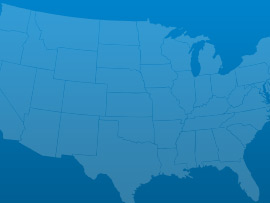 2012 Report Card for Texas' Infrastructure
2012 Report Card for Texas' InfrastructureInfrastructure is a part of our daily lives. Too often we take it for granted, even though in a typical day, most of us use or are impacted by each of the infrastructure categories assessed in this 2012 Report Card for Texas’ Infrastructure by the Texas Section of the American Society of Civil Engineers.
Before you even leave the house, you will turn on a light, which works because of energy infrastructure; get dressed in the morning using drinking water and wastewater infrastructure; eat a piece of toast, made with wheat grown using water dam infrastructure and transported on roads and across bridges, or along navigable waterways. After breakfast you might watch your kids leave for school and then take transit to work. You’ll take the garbage to the curb, which is disposed of using solid waste infrastructure, and if there’s a heavy afternoon storm, flood control infrastructure will protect your house. In the evening you’ll open a letter, mailed to your house using aviation infrastructure. We expect infrastructure to work efficiently and when it doesn’t, we quickly find out how much we rely on it like our fellow New Yorkers in the wake of the devastating super storm Sandy.
 Aviation
Aviation Bridges
Bridges Dams
Dams Drinking Water
Drinking Water Education
Education Energy
Energy Flood Control
Flood Control Inland Waterways
Inland Waterways Roads
Roads Solid Waste
Solid Waste Transit
Transit Wastewater
WastewaterA: Exceptional, B: Good, C: Mediocre, D: Poor, F: Failing, ?: Incomplete
Each category was evaluated on the basis of capacity, condition, funding, future need, operation and maintenance, public safety, resilience, and innovation
Aviation
209 public-use airports
Bridges
1,283 of the 52,561 bridges are structurally deficient
Bridges
$135.90 million in bridge funds came from the Federal Highway Bridge Fund in 2011
Dams
78% of the state regulated dams have an Emergency Action Plan
Dams
1086 high hazard dams
Drinking Water
$33.9 billion in drinking water infrastructure needs over the next 20 years
Energy
28.967 gigawatt-hours of renewable energy every year, ranking it 5th
Hazardous Waste
50 sites on the National Priorities List
Inland Waterways
830 miles of inland waterways, ranking it 13th nationally
Levees
1,465 miles of levees
Ports
485.9 million short tons of cargo in 2012, ranking it 2nd nationally
Public Parks
$115.0 million of unmet needs for its parks system
Rail
47 freight railroads covering 10,384 miles across the state, ranking 1st nationally by mileage
Roads
36,660 of the state’s 313,210 public roads are major roads, and 8% are in poor condition
Roads
$5.7 billion a year in costs to motorists from driving on roads in need of repair, which is $373 /yr per motorist
Schools
$12.6 billion in estimated school infrastructure funding needs
Transit
265 million annual unlinked passenger trips via transit systems including bus, transit, and commuter trains
Wastewater
$11.5 billion in wastewater infrastructure needs over the next 20 years

March 03, 2017
As the President’s repeated in his address to Congress his pledge to dramatically increase infrastructure spending to the tune of $1 trillion, various Congressional Committees

March 01, 2017
On Tuesday night, President Trump addressed a joint-session of Congress for the first time in his presidency. Infrastructure was among the many issues he discussed.

February 28, 2017
U.S. motorists set a new record for vehicle miles travelled (VMT) in 2016, driving over 3.2 trillion miles, an increase of 70 billion miles from

February 17, 2017
Romantic dates, the Grammy awards and celebrating black history are not the only milestones of this week; the Oroville dam crisis in California and the